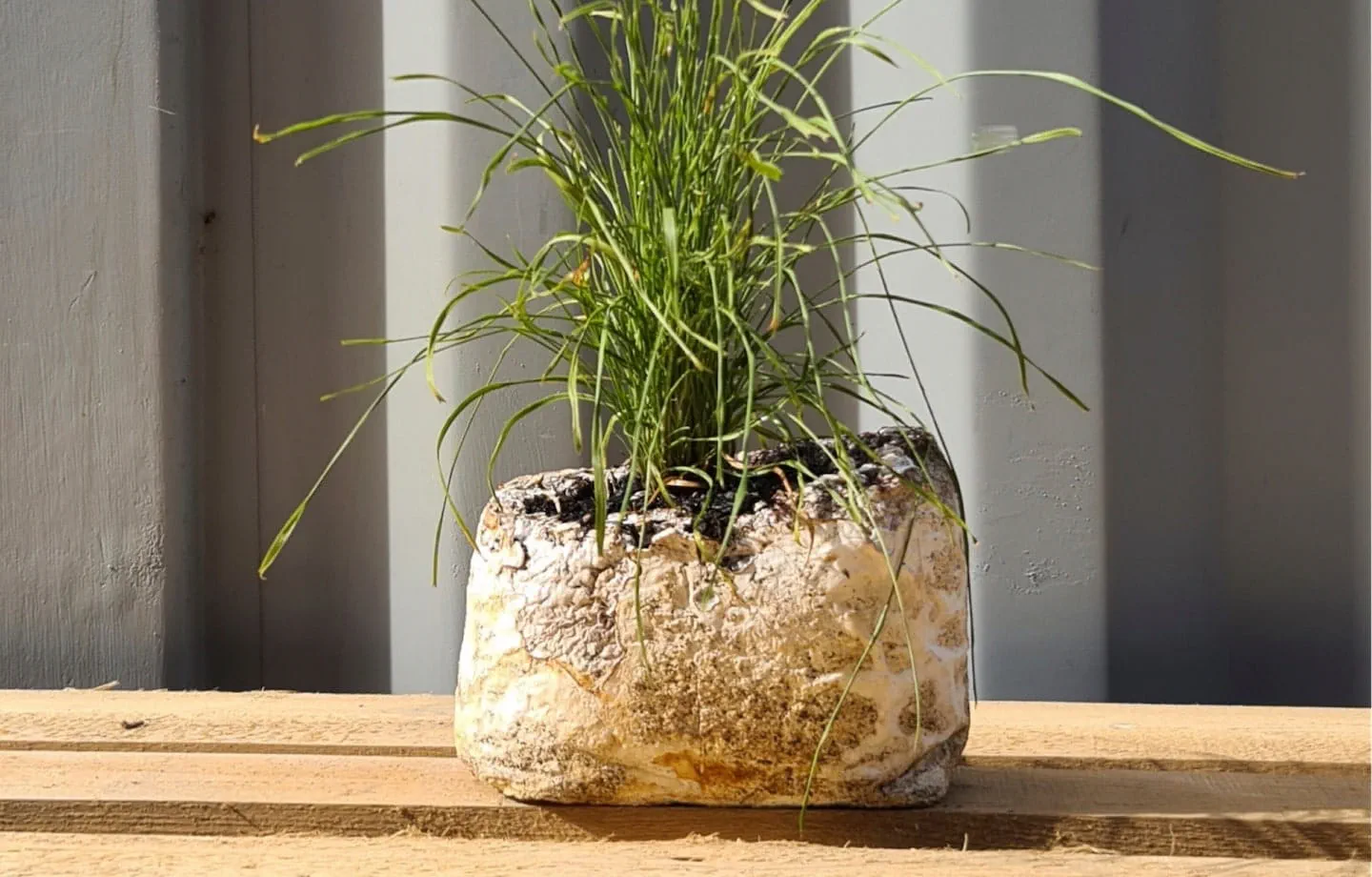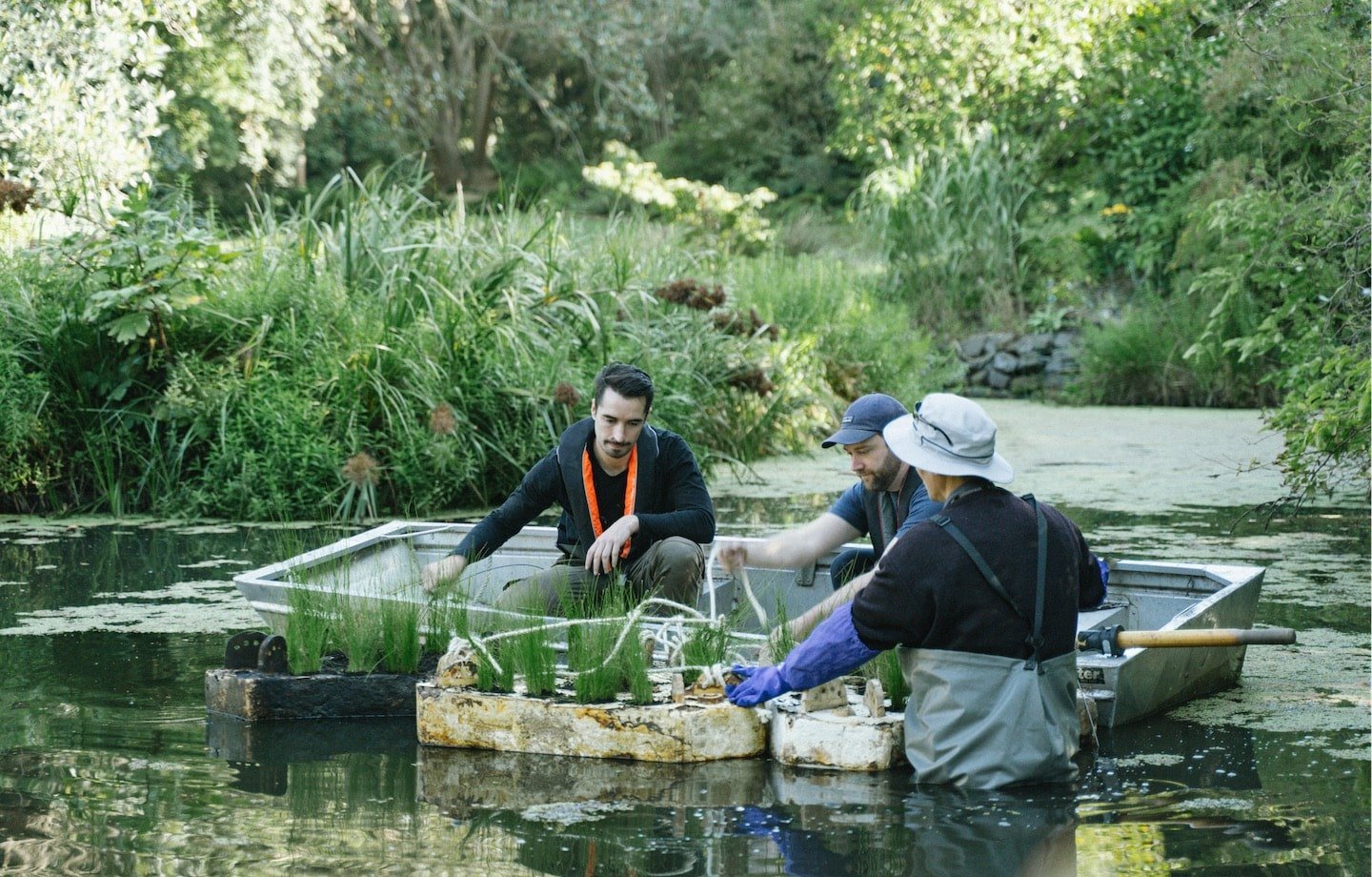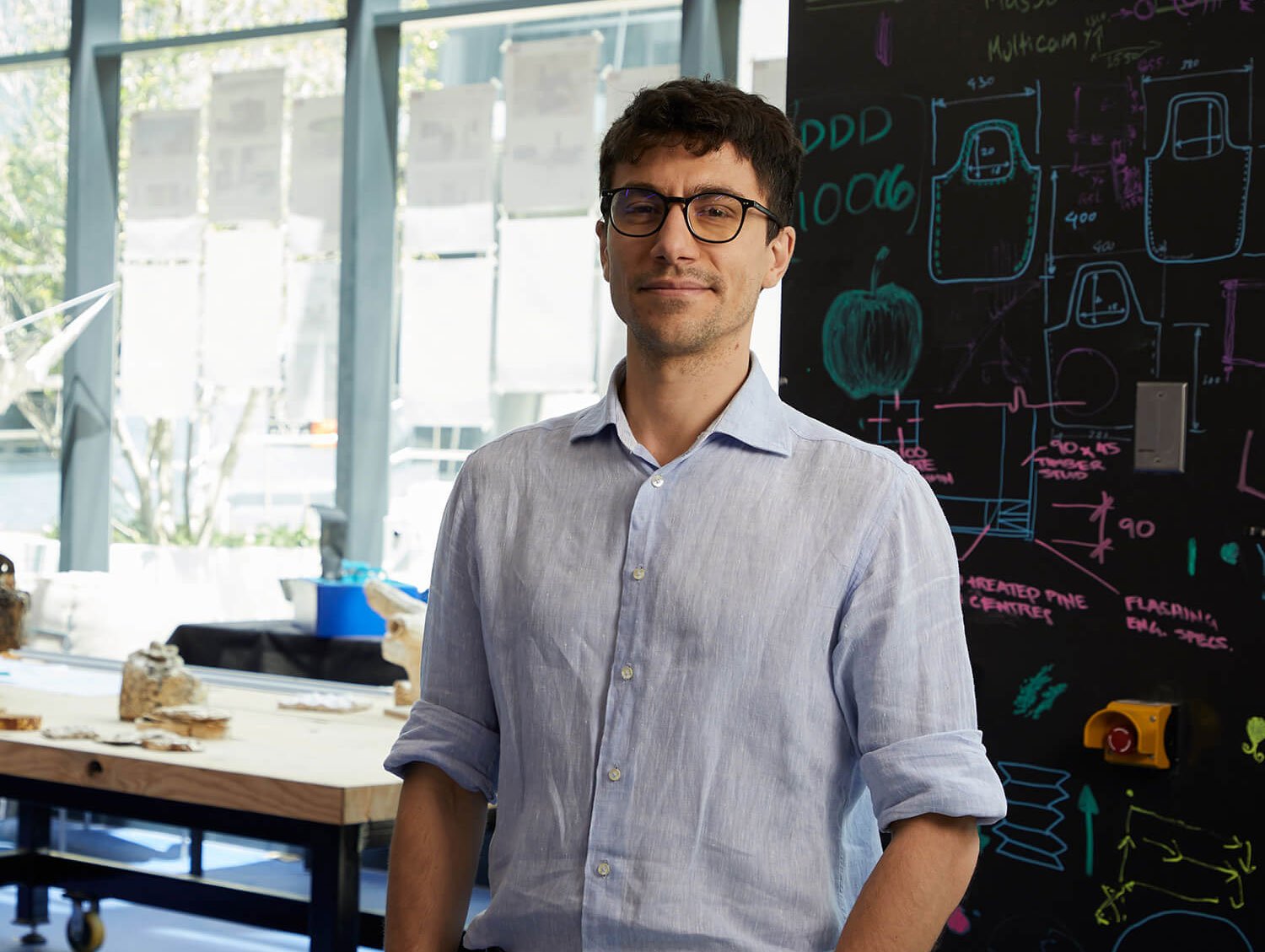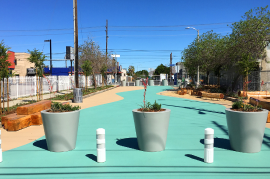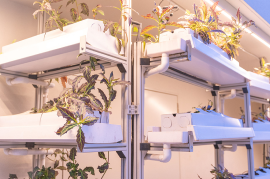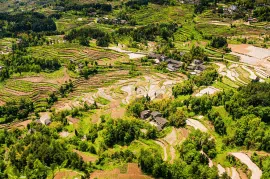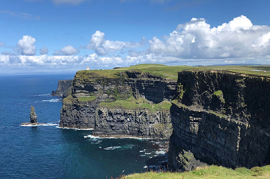LOADING...
Mycelium Floating Wetlands, Australia
Finding the
solution in
nature
Alessandro Liuti
Research Manager, Arup University
Scroll to explore
World-first innovation in biomaterials that could lead the way towards a waste-free future.
A sonic representation of the manufacturing process at microscopic scale: slow growth of a mycelium network in darkness, gradual densification and then exposure to light for ‘baking’.
Audio experienceFrom polluting plastic to restorative fungi
Wetlands are an ecological marvel. They improve water quality, protect against floods and act as habitats for a rich range of species, many of which are rare. Yet unsustainable development and increasing levels of pollution have destroyed more than a third of the world’s wetlands in the past 50 years. Attempts are being made to restore these valuable environments, but the plastic involved often creates more waste and pollution.
We are part of a groundbreaking project that uses mycelium – the roots of fungi – to replace plastic, providing a natural and biodegradable material that has had impressive results in an Australian wetland restoration pilot project.
More than one
Mycelium, which literally means ‘more than one’, is the roots of fungi, and is a biomaterial that can help us reduce carbon in the built environment.
Award-winning experimentation
Arup experts have been exploring mycelium’s potential for almost a decade and, in 2014, we were the structural engineers for a ‘mushroom tower’ that used it as an alternative to traditional building bricks.
More recently, our Melbourne team has collaborated with Swinburne University of Technology to explore the concept of floating mycelium wetlands, a design developed by local designers studio edwards. We shared our international experience of working with mycelium to create and then test living prototypes in this world-first project, which won the gold prize for design research at the prestigious 2021 Australian Good Design Awards.
Restoring nature with nature
Named Mushi, the product is created by blending fungi spores with waste – in this case sawdust – and pouring into a mould. Over 10 to 20 days, the fungi grow and digest the waste sawdust, creating a strong, lightweight, non-toxic and totally biodegradable material.
Three prototype wetland restoration pods made from mycelium have been trialled in the Royal Botanic Gardens Victoria, with impressive results. Plants grew stronger and more healthily from the Mushi than they did from plastic wetland alternatives. The plant roots were also able to burrow through the pods, reaching the water below and allowing the plants to purify the water naturally.
Naturally restorative
This biomaterial is being used to create a much-needed wildlife and plant habitat, while the roots of the plants purify the water below
Creative engineering
The vision now is to “turn a world-first into an industry-first" explains Alessandro Liuti, our Research Manager in Australia. “Arup’s attitude to innovation allows you to see the potential in something and to make the case to pursue it, even if it seems like quite a distant goal." Alessandro is confident that biomaterial like mycelium will become viable option for designers working across the built environment.
“ Mycelium ticks all the boxes for sustainability, regenerative design and reducing our carbon footprint, and it has the potential to engage local communities."
Alessandro Liuti
Research Manager, Arup University
What next for mycelium?
Arup designers have also been developing another use for mycelium - acoustic panels, which can function as biodegradable soundproofing or an interior design feature. We used it ourselves as a low-impact, lightweight element of our stand at the 2021 UN climate change conference COP26.
Back in Australia, the team that created Mushi is in discussions with water authorities about further wetlands experimentation, potentially inspiring communities to become involved in the simple, local manufacturing process. If Mushi fulfils its potential, the push to remove plastic from wetland restoration could take a major step forward.
